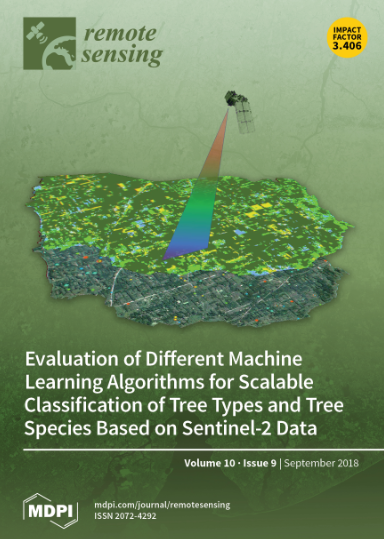通过自适应填充和可控量化实现任意形状云覆盖遥感图像的高效板载压缩
IF 4.2
2区 地球科学
Q2 ENVIRONMENTAL SCIENCES
引用次数: 0
摘要
由于在有限的卫星到地面传输速率下,遥感图像中的无效云覆盖区域会消耗大量的编码比特率,因此现有的图像压缩方法存在压缩效率低、重建质量差的问题,尤其是在通常被视为感兴趣区域(ROI)的无云区域。因此,我们利用多云图像的特点,提出了一种针对任意形状云的遥感图像的高效机载压缩方法。首先,我们引入了两种新颖的空间预处理策略,即优化自适应填充(OAF)策略和可控量化(CQ)策略。具体来说,OAF 策略利用云层内外边缘的上下文信息填充每个云层区域,以完全去除云层区域的信息,并最大限度地减少其编码消耗,适用于只有厚云层的图像。CQ 策略隐式识别薄云和厚云,合理量化云雾区域的数据,减轻薄云覆盖区域的信息损失,可实现编码效率和重建图像质量之间的平衡,更适用于含有薄云的图像。其次,我们开发了一种高效的二进制云掩码编码方法,以有效节省边信息的比特率。我们的方法为用户提供了灵活性,可根据需要选择所需的预处理策略,并可嵌入 JPEG2000 等现有压缩框架。在 GF-1 数据集上的实验结果表明,我们的方法有效降低了无效云覆盖区域的编码消耗,显著提高了压缩效率和解码图像的质量。本文章由计算机程序翻译,如有差异,请以英文原文为准。
Efficient On-Board Compression for Arbitrary-Shaped Cloud-Covered Remote Sensing Images via Adaptive Filling and Controllable Quantization
Due to the fact that invalid cloud-covered regions in remote sensing images consume a considerable quantity of coding bit rates under the limited satellite-to-ground transmission rate, existing image compression methods suffer from low compression efficiency and poor reconstruction quality, especially in cloud-free regions which are generally regarded as regions of interest (ROIs). Therefore, we propose an efficient on-board compression method for remote sensing images with arbitrary-shaped clouds by leveraging the characteristics of cloudy images. Firstly, we introduce two novel spatial preprocessing strategies, namely, the optimized adaptive filling (OAF) strategy and the controllable quantization (CQ) strategy. Specifically, the OAF strategy fills each cloudy region using the contextual information at its inner and outer edge to completely remove the information of cloudy regions and minimize their coding consumption, which is suitable for images with only thick clouds. The CQ strategy implicitly identifies thin and thick clouds and rationally quantifies the data in cloudy regions to alleviate information loss in thin cloud-covered regions, which can achieve the balance between coding efficiency and reconstructed image quality and is more suitable for images containing thin clouds. Secondly, we develop an efficient coding method for a binary cloud mask to effectively save the bit rate of the side information. Our method provides the flexibility for users to choose the desired preprocessing strategy as needed and can be embedded into existing compression framework such as JPEG2000. Experimental results on the GF-1 dataset show that our method effectively reduces the coding consumption of invalid cloud-covered regions and significantly improve the compression efficiency as well as the quality of decoded images.
求助全文
通过发布文献求助,成功后即可免费获取论文全文。
去求助
来源期刊

Remote Sensing
REMOTE SENSING-
CiteScore
8.30
自引率
24.00%
发文量
5435
审稿时长
20.66 days
期刊介绍:
Remote Sensing (ISSN 2072-4292) publishes regular research papers, reviews, letters and communications covering all aspects of the remote sensing process, from instrument design and signal processing to the retrieval of geophysical parameters and their application in geosciences. Our aim is to encourage scientists to publish experimental, theoretical and computational results in as much detail as possible so that results can be easily reproduced. There is no restriction on the length of the papers. The full experimental details must be provided so that the results can be reproduced.
 求助内容:
求助内容: 应助结果提醒方式:
应助结果提醒方式:


